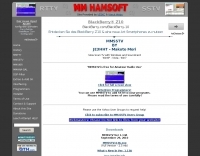

DRM can deliver FM-comparable sound quality, but on frequencies below 30 MHz (long wave, medium wave and short wave), which allow for very-long-distance signal propagation. VHF is also under consideration, under the name 'DRM+'. DRM has been designed especially to use portions of older AM transmitter facilities such as antennas, avoiding major new investment. DRM is robust against the fading and interference which often plagues conventional broadcasting on these frequency ranges.
Digital Slow Scan Television (SSTV) seems to be growing in popularity and EASYPAL provides one way to get started in the mode. EasyPal enables you to send Digital SSTV pictures using a standard HF SSB rig.
- Easypal is a freeware dsstv software uses the drm digital radio mondiale encoding to allow the sending of image files over voice channels this mode is known as digital sstv. Listed under the Software/DRM category that is about Digital Radio Mondiale software.
- WinDRM is an amateur radio derivation of the Digital Radio Mondiale (DRM) digital voice and data transmission protocol. Known as HamDRM, and Digital SSTV. Uses the same technology from commercial DRM broadcasts, with COFDM Coded Orthogonal Frequency-Division Multiplexing-QAM Quadrature Amplitude Modulation modulation, and is able to send text, voice, and images.
- This is a sample picture produced in EasyPal. It is a digial SSTV image which is sent using DRM. Decode the picture yourself to see what it is.If it fails, s.
- WA Digital SSTV Group The net operates on 40 meters on 7.214MHz between 0800 UTC and 0900 UTC daily using Easypal digital SSTV program for Windows, mostly in hybrid mode. In winter, when the conditions on 40 meters prevent its use, you will find us on 80 meters at 3.630Mhz also between 0800 UTC and 0900 UTC.


The encoding and decoding can be performed with digital signal processing, so that a cheap embedded computer with a conventional transmitter and receiver can perform the rather complex encoding and decoding.
Easypal Digital Sstv Software
As a digital medium, DRM can transmit other data besides the audio channels (datacasting) — as well as RDS-type metadata or program-associated data as Digital Audio Broadcasting (DAB) does. Unlike most other DAB systems, DRM uses in-band on-channel technology and can operate in a hybrid mode called Single Channel Simulcast, simulcasting both analogue signal and digital signal.
Easypal Digital Sstv Program Download
